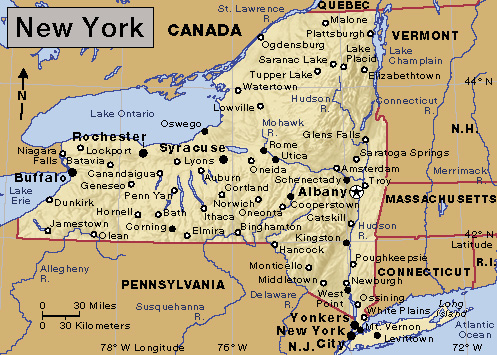Yonkers, New York (pop. 211,569), part of the New York City metropolitan area, is an important manufacturing center. Yonkers lies in Westchester County between the Bronx and Hudson rivers.

Yonkers covers 20 square miles (52 square kilometers). The city is the home of St. Joseph’s Seminary and College, and Sarah Lawrence College is in nearby Bronxville. Museums include Philipse Manor Hall and the Hudson River Museum. Yonkers has many manufacturing plants. The chief products include chemicals, corn syrup and molasses, and electronic parts for aircraft and spacecraft.
Manhattan Indians once lived in the area that is now Yonkers. In 1646, Adriaen Van der Donck, a Dutch nobleman, received a land grant that included the site. He built a sawmill near the junction of the Nepperhan and Hudson rivers, where he could use the Nepperhan’s water power. Van der Donck was called De Jonkheer (young gentleman). The settlement around the mill was known as De Jonkheer’s land and, later, as Yonkers.
In 1693, a merchant named Frederick Philipse gained possession of much of the Yonkers area. He rented land to farmers, and, by the 1800’s, the community consisted chiefly of farmers. The Hudson River Railroad opened in 1849, which encouraged the development of new industries in the area. Elisha G. Otis opened an elevator manufacturing shop in Yonkers in 1853, and his business grew into a leading industry (see Otis, Elisha Graves ). Yonkers became a village in 1855 and a city in 1872. Industrial expansion continued in Yonkers in the early 1900’s. Newly created manufacturing jobs attracted many immigrants.
In 1983, the Otis elevator factory closed. Yonkers has a mayor-council form of government.
